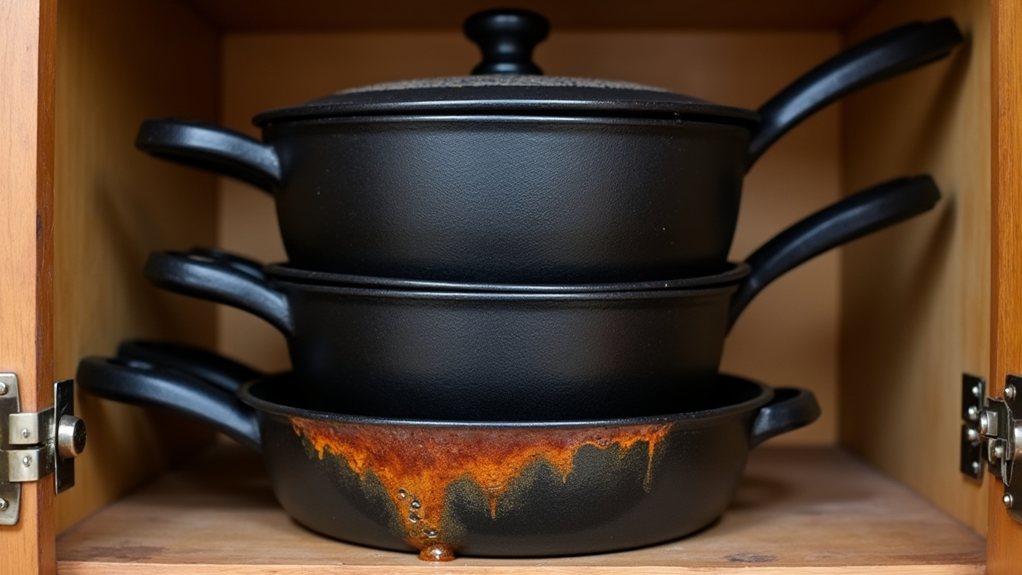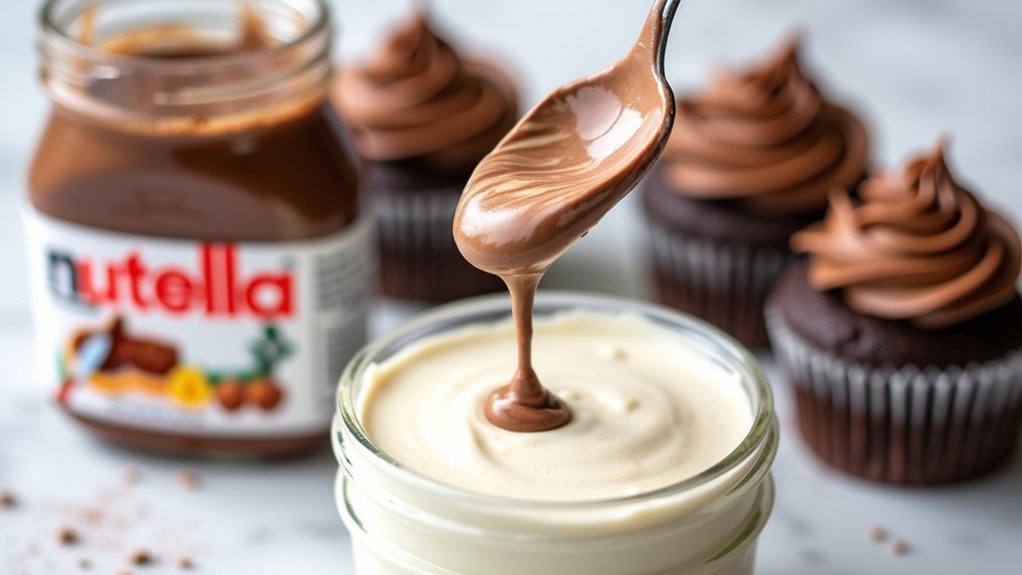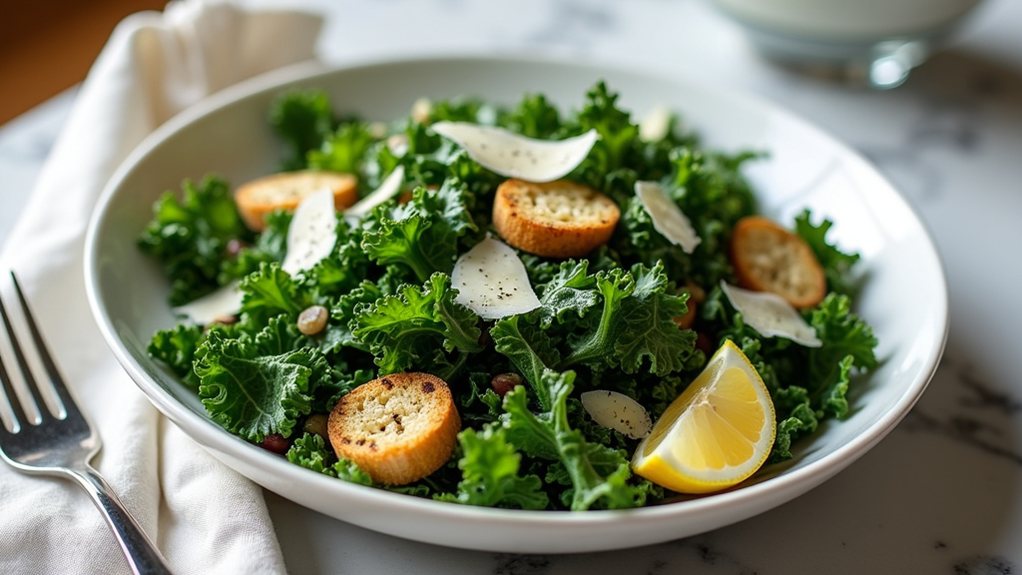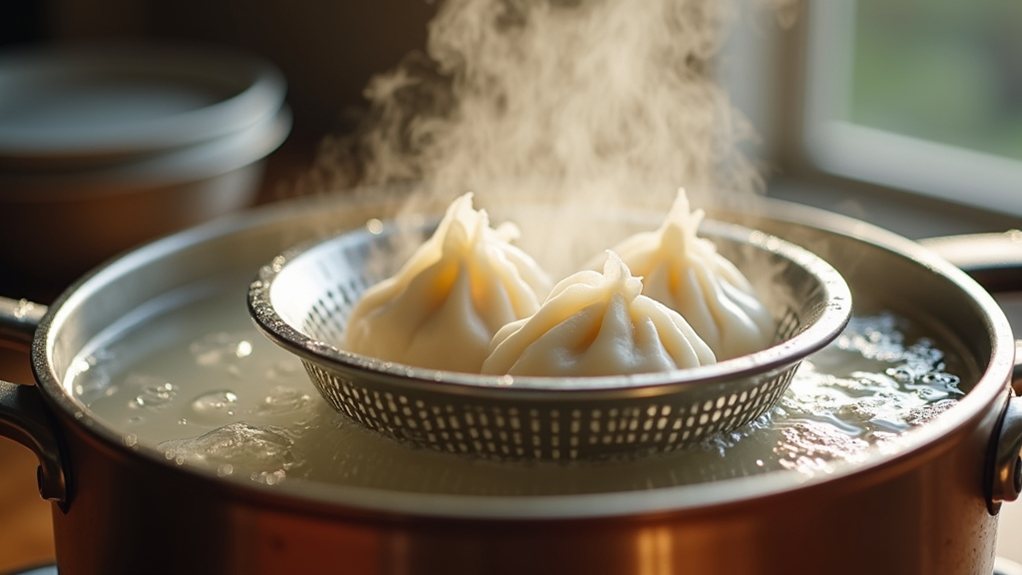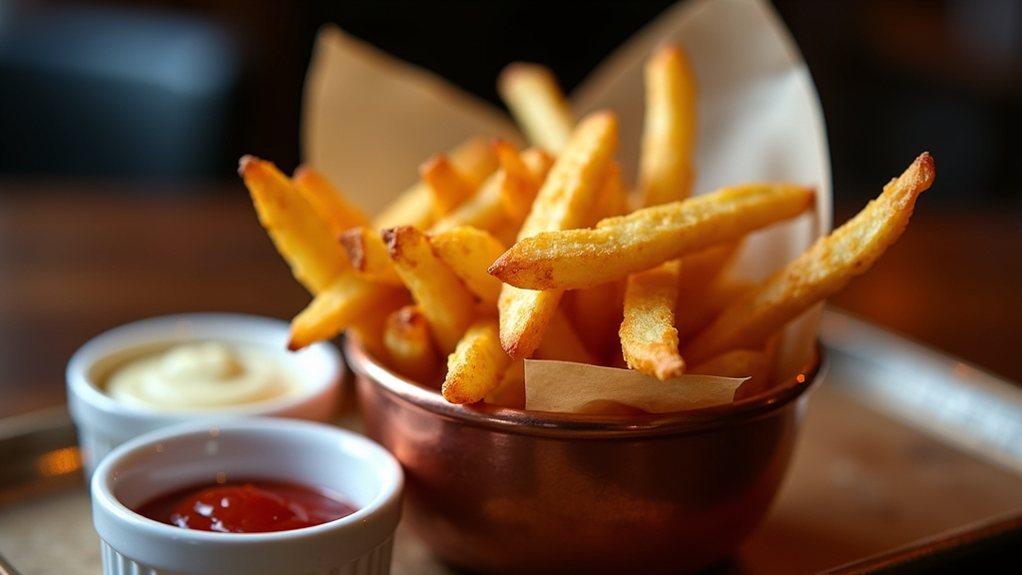Cast iron cookware has earned its reputation as a kitchen heirloom, passed down through generations with pride. However, many home cooks unknowingly sabotage their pans through improper storage habits. Stacking without protection, trapping moisture with lids, and exposing these durable tools to humidity quietly initiates a destructive process. The seasoned surface—that carefully cultivated non-stick layer—deteriorates gradually, often going unnoticed until significant damage occurs. What exactly happens during improper storage, and how can this damage be prevented?
Common Storage Mistakes That Damage Cast Iron
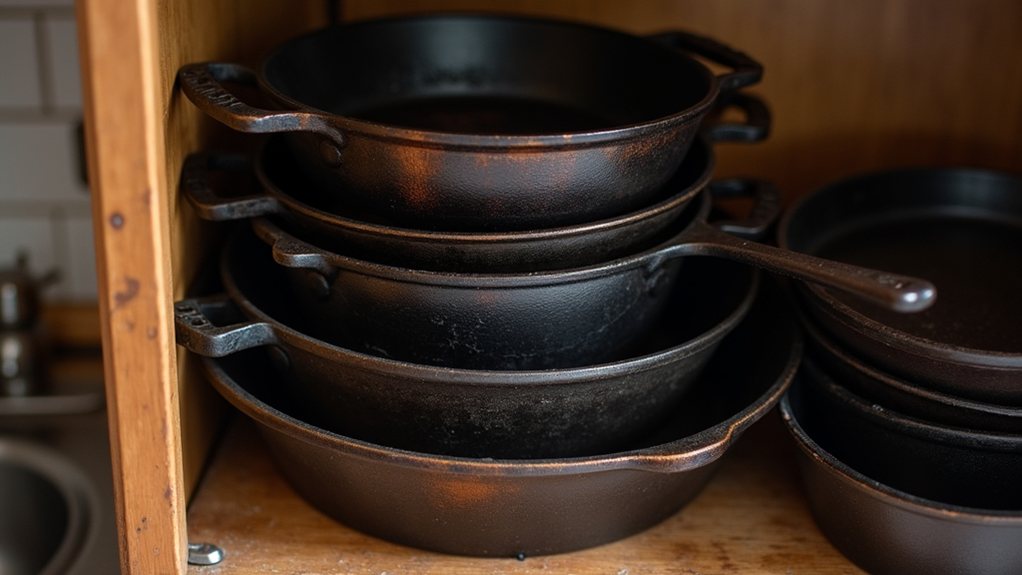
Proper storage of cast iron cookware is a crucial step that many home cooks overlook, potentially leading to premature deterioration of these kitchen workhorses. The way these durable pans are stored can greatly impact their longevity, with improper methods slowly but surely undermining their seasoned surfaces and structural integrity.
While cast iron has earned its reputation for lasting generations, this durability is contingent upon proper care, particularly during periods of disuse.
Moisture is the sworn enemy of cast iron, silently attacking the metal and forming rust whenever given the opportunity. Storing pans with their lids on traps humidity inside, creating the perfect environment for corrosion to develop overnight. Likewise, stacking pans without protection between them can scratch seasoning and expose the raw metal beneath. Using paper towels between stacked cookware can prevent surface damage while maintaining cleanliness of cooking surfaces.
Neglect moisture control in cast iron storage, and you’re unwittingly partnering with corrosion to destroy your cookware’s seasoned protection.
Many cooks, in their quest for convenience, place their cookware in cabinets near sinks or dishwashers, where ambient moisture levels remain consistently high. Alternatively, consider using parchment paper between stacked cookware for a no-mess storage solution that prevents scratching.
The seasoning that gives cast iron its non-stick properties requires regular maintenance, even in storage. When pans are tucked away without a protective oil coating, the polymerized surface can begin to degrade, leading to food sticking during the next use.
Steel wool and harsh scrubbers, often employed before storage, strip away this carefully built-up seasoning, leaving the iron vulnerable to the elements. The “clean slate” approach, ironically, opens the door to deterioration.
Overzealous cleaning before storage presents another common pitfall. While cleanliness matters, excessive scrubbing with abrasive materials damages the seasoned surface that protects the iron beneath. Proper maintenance involves gentle cleaning methods that preserve the chemical-free cooking surface while ensuring longevity of your cookware. Collecting and repurposing rendered fat from cooking bacon can provide an excellent natural oil for maintaining your cast iron’s seasoning during storage periods.
Furthermore, storing heavy cast iron pieces unstably on hooks that aren’t properly anchored to wall studs can lead to dangerous falls, damaging both the cookware and kitchen surfaces. The weight of cast iron demands respect in storage planning.
With thoughtful storage practices—keeping pans dry, lightly oiled, and in low-humidity environments—cast iron cookware can truly fulfill its promise of becoming an heirloom passed down through generations of cooking enthusiasts.
